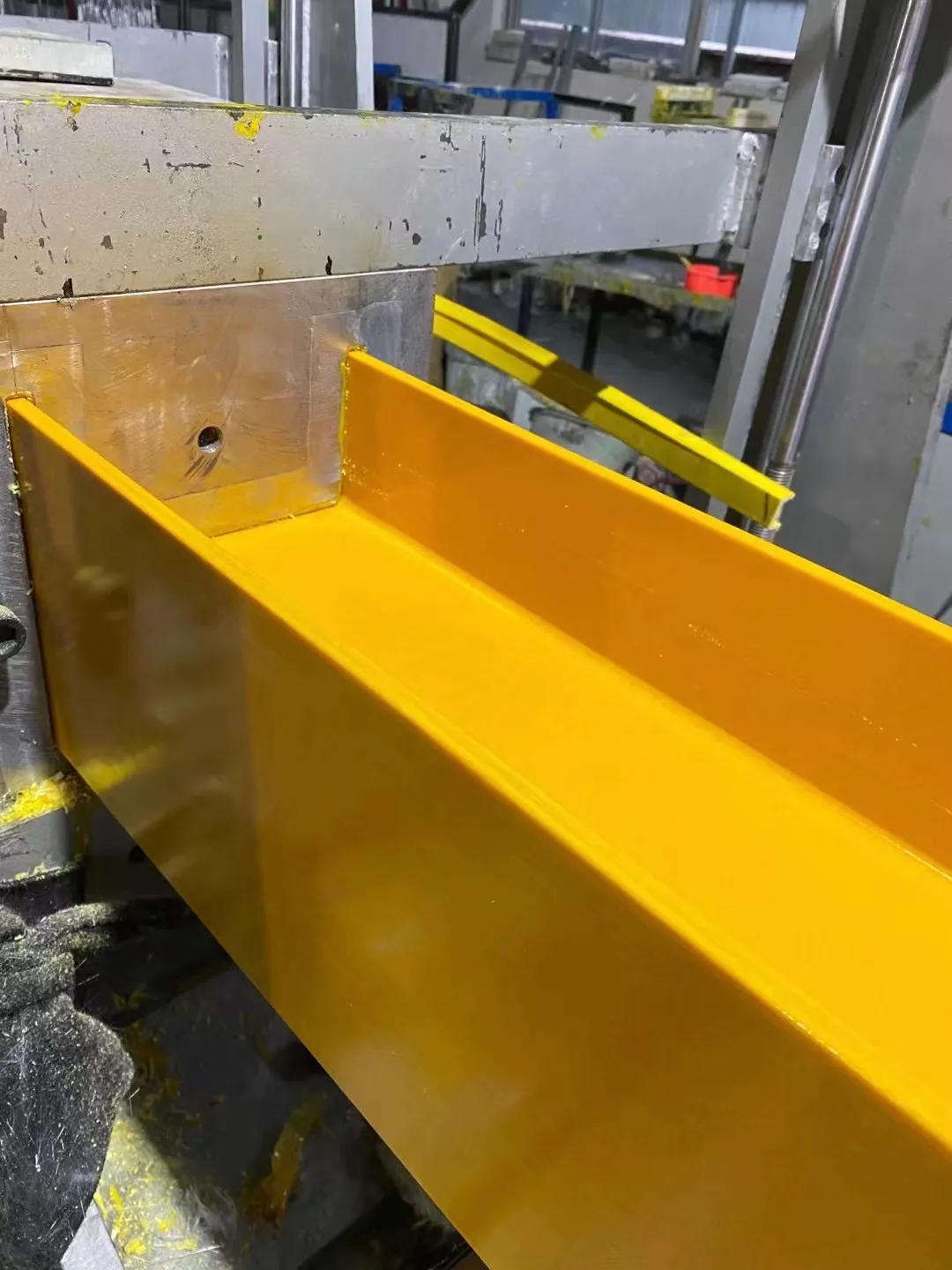loading...
- No. 9, Xingyuan South Street, Dongwaihuan Road, Zaoqiang County, Hengshui, Hebei, China
- admin@zjcomposites.com
- +86 15097380338
- Welcome to visit our website!
frp structural profiles
Understanding FRP Structural Profiles A Comprehensive Overview
Fiber Reinforced Polymer (FRP) structural profiles represent a significant advancement in materials science, combining the benefits of lightweight construction with exceptional strength and corrosion resistance. These profiles are increasingly finding applications across various industries, including civil engineering, marine, and aerospace, due to their versatile properties and performance advantages.
What are FRP Structural Profiles?
FRP structural profiles are composite materials made by combining a polymer matrix with fibrous reinforcement, such as glass, carbon, or aramid fibers. This combination results in materials that exhibit high tensile strength, low weight, and excellent durability. The most common forms of FRP profiles include beams, channels, angles, and plates, which can be manufactured in a range of sizes and geometries to meet specific engineering requirements.
Advantages of FRP Structural Profiles
1. Lightweight Composition One of the most significant advantages of FRP profiles is their lightweight nature. This property not only simplifies transportation and handling but also allows for easier installation, reducing labor costs and overall project timelines.
2. Corrosion Resistance FRP materials are inherently resistant to environmental degradation, unlike traditional materials such as steel. This makes FRP profiles ideal for use in harsh environments, including coastal or chemically aggressive settings, where corrosion could significantly shorten the lifespan of structural components.
3. High Strength-to-Weight Ratio The strength of FRP materials often surpasses that of conventional materials, providing structural integrity without the added weight. This characteristic is particularly advantageous in applications where load-bearing capacity must be maximized while minimizing the weight of the structure.
4. Design Flexibility The manufacturing process for FRP profiles allows for intricate designs that can accommodate specific load requirements and aesthetic preferences. Designers can create custom profiles tailored to the unique demands of a project, offering greater flexibility compared to traditional materials.
frp structural profiles

Applications of FRP Structural Profiles
FRP profiles are utilized across various sectors, including
- Civil Engineering In construction, FRP materials are often used for structural reinforcement, bridge components, and lightweight flooring systems. Their durability and low weight reduce maintenance costs and extend the lifespan of structures.
- Marine Industry Due to their resistance to saltwater and corrosion, FRP profiles are used in boats, docks, and other marine infrastructure, providing long-lasting performance in underwater applications.
- Aerospace The aerospace sector benefits from the lightweight and high-strength characteristics of FRP materials, often using them for fuselage components, wings, and other structural elements where weight saving is critical for fuel efficiency.
- Transportation FRP is increasingly used in the automotive industry for components such as body panels and structural elements, improving fuel efficiency and performance while reducing overall vehicle weight.
Future Trends in FRP Structural Profiles
As technology advances, the production and application of FRP materials are set to evolve further. Innovations in manufacturing processes, such as 3D printing and automated fiber placement, may lead to more cost-effective and scalable methods for producing complex structural profiles. Additionally, as sustainability becomes a leading concern in construction and manufacturing, biodegradable and recycled FRP composites are likely to gain traction, further enhancing the environmental benefits of this remarkable material.
In conclusion, FRP structural profiles are pioneering materials that are reshaping the landscape of construction and engineering. With their unique combination of properties, they provide solutions to some of the most pressing challenges in various industries, paving the way for innovative and sustainable designs in the future. Their ongoing development is sure to expand their applicability and reinforce their importance in modern engineering solutions.
-
GRP Structures: The Future of Lightweight, High-Performance EngineeringNewsJun.20,2025
-
FRP Water Tank: High-Performance Storage for Corrosive and Clean Water SystemsNewsJun.20,2025
-
FRP Square Tube: The New Industry Standard for Chemical and Structural ApplicationsNewsJun.20,2025
-
FRP Pultruded Profiles: The Ultimate Choice for Lightweight Structural StrengthNewsJun.20,2025
-
FRP Handrails: The Safer, Smarter, and Stronger Choice for Modern InfrastructureNewsJun.20,2025
-
FRP Grating: The Smart Solution for Durable, Lightweight Industrial FlooringNewsJun.20,2025
-
Why Choose a Galvanized Water Tank for Your Storage NeedsNewsMay.21,2025
